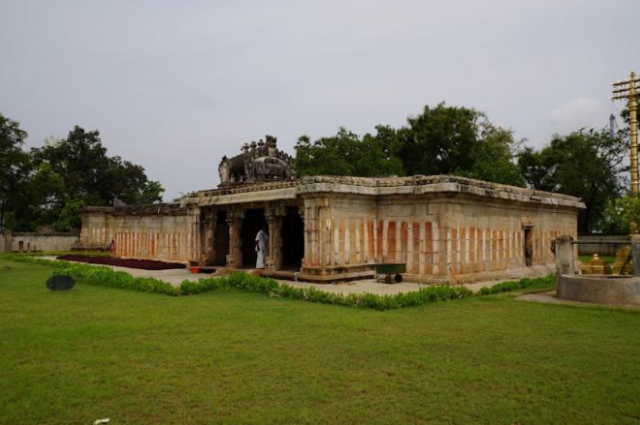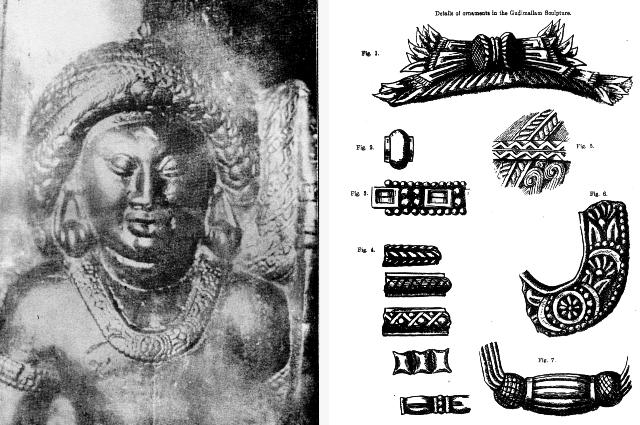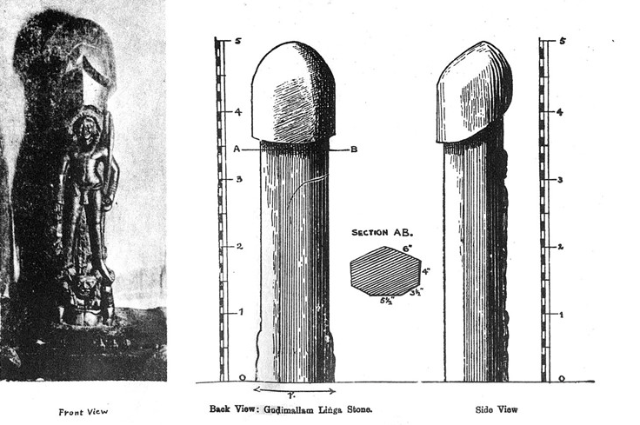
Visit "Sri Parushurameshwara Swamy Temple" at Gudimallam village in Yerpedu district of Chittoor district of Andhra Pradesh. Historically significant. It is an ancient Shiva temple of the Andhra Shatavahans. Historians determine from the inscriptions found here that they were built in the 2nd or 3rd century BC. More information about the temple is available in the museum at Chandragiri Fort.
History of the Temple
This temple was kept for some time by the Chandragiri kings. Later, the Muslim rulers destroyed the shrine with the Chandragiri state. Otherwise, the Swamiji Swamy had no trouble.
Pallava and Gangapallava on the walls of the temple. Inscriptions of the Arrow and Chola kings are found. Legislative researchers have found that these are mostly in Tamil. All are special contributors to the Lord. The oldest of them is an inscription written by Pallavaraju Nandivarma in 802 AD. But Gudimella's name is not mentioned in any of these inscriptions. The name of the village is mentioned only in the inscriptions as Viprapita (Brahman Agrahara). Many inscriptions can be seen on the walls of the temple and inside the temple premises. But the builders did not mention it in a single inscription. But there is anecdotal evidence that Swamy donated money, land, and property to the everlasting incense burner. Don't know what the shrine is. However, the museum at Mathura in Uttar Pradesh was built around BC. Gender is preserved as far back as the first century. It resembles this goodwill Shivalinga. Similarly in Ujjain, BC. There are some copper coins believed to date back to the third century. Above them is a picture of the Shiva Linga of Gudimella. Shivalinga in the temple. It looks like a bag wrapped with a drawstring. Shivamurthy is standing on the shoulders of a demon. Khajurahola also looks like a Mongolian form. Considered to be the oldest Shiva temple in the time of the Andhra Shatavahanas, more information on this temple is available at the Chandragiri Fort Museum.
Gudimallam Shivalinga Characteristics

Lord Shiva is worshiped as Lord Parashurameshwara in the Gudimallam Shiva Temple. The Shivalinga here is very special. The Shiva Linga, installed in the sanctum sanctorum of the sanctum sanctorum in the form of Lord Shiva in human form, is not a lingam. The lingam is man-made of black coffee-colored stone. The penis is about five feet long and one foot wide. Shiva, carved from the front of the lingam, with a bump on the front of the linga, was in the form of a standing (goddess) standing on the shoulders of the unconscious person. Swami with both hands. He holds the lamb's legs (upside down) with his right hand and holds the small (shell) in his left hand. He was carrying an ax to his left shoulder.
Swami Jatabhara (with all the knots tied up) wore a headband, several rings to the ear, and various ornaments, hanging from the waist to the middle of the length (from waist to knee). The pots hanging in the middle of the fabric are more visible. Swamy's body parts are clearly visible as the clothes are very elegant. It is true that the Lord has no altar. The deep sunken line is clear, separating the upper part of the penis and the lower part of the lower penis, and the entire penis resembles the penis. This sex is considered the oldest gender. It is also known as the example of contemporary Saivism. Historians refer to it as BC. In 1911, Gopinadharao, an ancient scientist, conducted a year of research and spread the existence of this Shivalinga to the world.

Nowhere in the world is a seven-foot Shivalinga resembling a male limb engraved with a replica of Rudra standing on the shoulders of a calf in one hand and a sheep in the other. Scientists believe that this Rudvara dress, which is worn with a dagger and a dowry, is from the Rig Veda. There is no information about the stone used to carve this lingam which describes the process of ancient Saivite worship. The sanctum sanctorum of the temple is in the shape of a yard flower.
In the inscriptions found in the temple, it is referred to as Parameshwaralaya. Excavations around gender. The remains of an ancient temple dating back to the 2nd century. The temple was taken over by the Indian Archaeological Society in 1954 by the villagers of Gudimallam. Worship in the temple has stopped since then. Most of the statues are theft. There is no minimum information on such a famous Shivling on the archaeological website. There has been no change in the lawn except for the lawn being planted around the temple. Gunashekhar Naidu, a Gudimalla villager who complained that ASI Dharmanna was unable to perform at least a puja, fought with the archaeological department's general director from 2006 to 2008 as an information law instrument. As a result of the efforts of Gunasekhara Naidu, in 2009, permission was granted from the villagers to worship at the temple.
There is a toy resembling this organ on copper coins found in Ujjain in the past. There is a similar sculpture in the Mathura Museum. There is no information on this temple except for two books, 'Parameshwara Temple at Gudimallam' written by Ingu Karthikeya Sharma, 'Early Shaiva Art and Architectural Development' and some sculpture and art history research papers. Now the temple market is going to be God. It is part of a multi-billion-dollar heritage project. Ambika Soni recently performed the ritual here. An MP has set out to build a guest house here. Some of the brass coins found in Ujjain are found in the same gender. These coins date back to BC. Marked as belonging to the 3rd century.
Another Epic
Parasurama, who beheaded his mother at the instigation of the father, tells the story in the Puranas. The Rishis suggest that Shiva Linga should be sought and worshiped in order to recover from consciousness. After searching several times, Parashurama spotted a linga in the middle of the forest and then dug a pond near the temple.
He was worshiping Lord Shiva every day with the divine flower of wonder. He protects the fairy (Chitrasena) to protect the flower from wild animals. For this reason, Lord Parashuram brought him a living creature and toys every day. When Parashurama arrives, Chitrasena angrily attacks the man with a lack of flowers. That battle lasted 14 years, so the area became a big ditch or depression. That is why this place is called Gudipallam.
As soon as the war is over, Lord Shiva returns to him and praises his devotion. According to popular folklore, the linga is the shape of Parashurama (the form of Vishnu), a hunting beast on one hand, a stone on the other, and the face of Chitrasena (Brahma) on the linga of Shiva.
Another mysterious scene related to this temple is popular. It floods the main room every sixty years and the entire interior is flooded. The floodwater suddenly touches the top of the Shivalinga and then flows down once more. This underground tank then dries up. The incident is said to have taken place on December 4, 2005, in the temple list of temple surveyor P. Seenappa. He wrote that there was a flood for about 4 hours and disappeared until there was nothing in the temple again. The temple is another wonder. Twice in the north and south the rays of the sunrise through the grilled grill on these stone walls, directly on the forehead of the main Shivling.
Some more Temple Highlights
There are many small temples in this spacious temple complex. All around, there is a brick wall on either side, with a large dome entrance on the west side of the wall. This gateway and well built for the anointing water of the Swami belongs to the period of the Yadavadevarayas (13-14th century AD).
The main temple is named after Parashurameswaraswamy. To the north-west of this temple is the Ammavari Temple. Next to it is the Kartikeyaswamy Temple at Valli-Devasena in the south. Both of the above have a front door. Adjacent to the eastern end is the Suryanarayana Temple. This little temple is probably ruined. There are temples of other gods. All these date back to the days of the Arrow Chola kings (6th-7th century AD).
The main temple has many inscriptions on the walls and stone slabs. These were the later Pallavas, their counterparts, the Ganga Pallavas (AD 897-905), the Bana Cholas, the Chola King Vikrama Chola, and Rajaraja. There are still some inscriptions of the Yadava Devarayana period. The broad porch of the temple is built on top of the pillars surrounding the tall stone wall adjoining the sanctum sanctorum on either side.
The sanctum sanctorum only. So, the half pavilion has mahanda mandapas. The sanctum is much lower than that of the semis. That is why the village of Kabolu is also known as Gudipallam. The village is called Gudimalllam because of the statue of Lord Shiva and the young Malluniboli. But nowhere in the statutes should there be a reward. The village is called Viprapeetha. The name of that temple is Parashurameshwara Temple. The inscriptions do not state when or how the temple was built. The Shastras say that Swami donates for their daily services. Recent research shows that it dates back to the 1st to 2nd century BC. Can be considered a related gender.
In the main temple, the linga (a square pillar under it) is mounted on a rounded stone pedestal (vagina). The pedestals are very smooth and beautiful, but the stone is separate - the sandstone, the vagina structure is very hollow, the seat is very simple. On these pillars are carved various kinds of Padmasambhava, flowers and chakras. These coins date back to BC. Marked as belonging to the 3rd century. The 1st century BC sculpture in the Atlee Mathura Museum resembles this gender.
The linga is inscribed as the ascending human gender. The central part of the penis looks nervous. Holding his head. Here it can be compared to the idol of Lord Shiva. The Rigveda Rudra does not have Jandhyama. The statue should not be sacrificed. On Swami Chalamoorthy. Since the epileptic man is on the shoulder blades, it is very common for the penis to hang down. But as you can see, the Shivalinga pavilion is not the same as the upmarket silk. Depending on this, they are called Dakshinamoorthy or Kapardiga.
The statue of Lord Shiva is believed to have contributed to the image of Lord Shiva in various forms, since after the temple was fully built and expanded - the Pallavas, Cholas, and Banu placed various statues of Lord Shiva in various forms (Dakshinamoorthy, Kankalamoorthy, Pashupatamoorthy, Veenadhari, Umashithamurthy).
Archaeological excavations around the site reveal a hemispherical temple wall made of bricks dating back to the 2nd or 3rd century AD. Therefore, the temple was built around the time of the Shatavahana-Ikshawaku period, probably around the 2nd to 3rd century AD. The temple was demolished by the Pallavas-arrow-Cholas, who built it in the same shape as the breadth of the stone and made some changes and additions.

